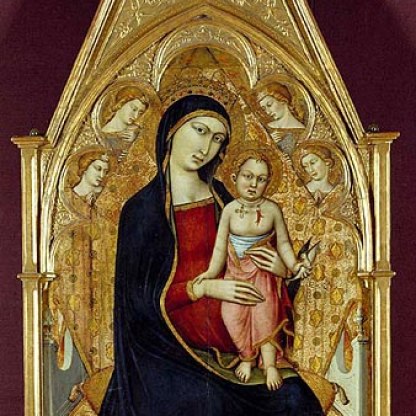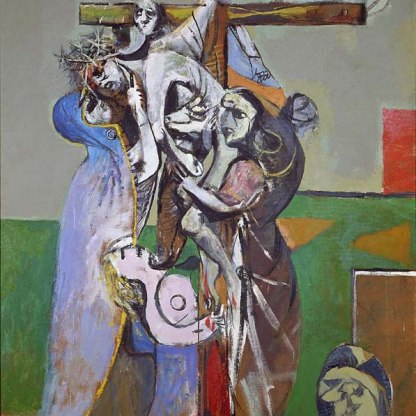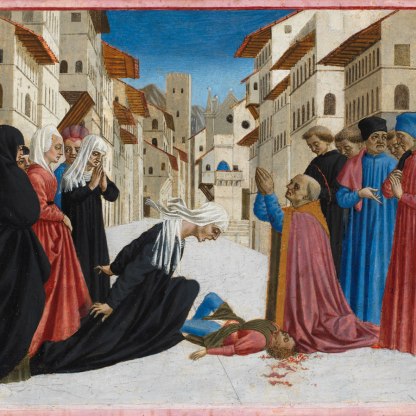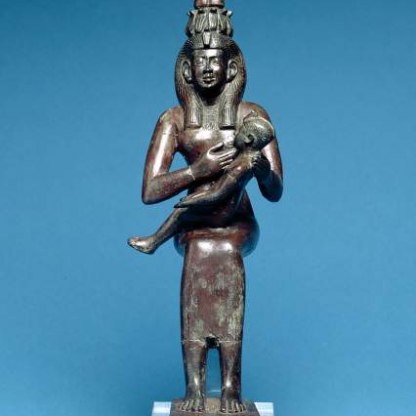The Madonna of Humility
A fourteenth-century legend has it that a Franciscan friar, Jean Firman, once prayed to see the Mother of God, not in her celestial glory, but as the humble woman that she had been on earth. She answered his prayer. There was a desire at this period to humanise the Holy Family, to make them seem more approachable amid the gold and finery of church ceremonial. This impulse may have been one of the factors behind the development of the type of picture known as the Madonna of Humility.

Sometime before the middle of the fourteenth century, perhaps inspired by a lost painting by Simone Martini, this new way of depicting the Madonna and Child started appearing in Italy. Now, rather than being seated on a throne in heaven, as in Luca di Tommè's c. 1370 altarpiece, above [563], the Virgin is shown sitting on a cushion or directly onto the ground. She appears thus in a mid-fifteenth-century tabernacle by Paolo di Stefano, below [557].

In Fra Filippo Lippi's altarpiece, the throne may have gone but the Madonna still retains a regal bearing. Behind her back, four young angels hold up a cushion, while she herself appears to rest on clouds, represented by the green curves flecked with gold that we can see beneath her voluminous skirt.
Other highlight objects you might like
Other pathways and stories you might like
Sign up to our emails
Be the first to hear about our news, exhibitions, events and more…






